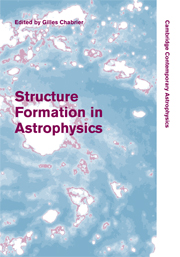Book contents
- Frontmatter
- Contents
- List of contributors
- Preface
- Part I Physical Processes and Numerical Methods Common to Structure Formations in Astrophysics
- Part II Structure and Star Formation in the Primordial Universe
- Part III Contemporary Star and Brown Dwarf Formation
- Part IV Protoplanetary Disks and Planet Formation
- Part V Summary
Preface
Published online by Cambridge University Press: 11 August 2009
- Frontmatter
- Contents
- List of contributors
- Preface
- Part I Physical Processes and Numerical Methods Common to Structure Formations in Astrophysics
- Part II Structure and Star Formation in the Primordial Universe
- Part III Contemporary Star and Brown Dwarf Formation
- Part IV Protoplanetary Disks and Planet Formation
- Part V Summary
Summary
Understanding the formation of gravitationally bound structures at all scales in the universe is one of the most fascinating challenges of modern astronomy. It is now realized that the initial building blocks of galaxies were small collapsing dark matter halos, produced by the primordial fluctuations. These blocks then merged and were assembled into progressively larger galaxies, a scheme generally described as the hierarchical model of galaxy formation. The modern understanding of star formation involves large-scale turbulent motions producing local overdensities which eventually collapse and form prestellar cores under the action of gravity. The most likely scenario for planet formation is the collapse of a vast gaseous envelope onto a central dense core formed from the aggregation of millimetre-size grains in the original protoplanetary nebula, although disk fragmentation could remain an alternative scenario in some situations. The detailed processes responsible for the formation of these structures, however, remain poorly understood. Many important issues remain unsettled, so the robustness of these general paradigms is still ill determined. All these scenarios for the formation of galaxies, stars and planets, although involving vastly different scales, share many underlying physical mechanisms.They all involved hydrodynamical processes, generally leading to turbulent motions, but the very nature of these motions and their real role in structure formation remains unclear. The role of magnetic fields, in the collapse itself and in the generation of winds and jets, remains one of the major unknowns in the formation of structures.
- Type
- Chapter
- Information
- Structure Formation in Astrophysics , pp. ix - xPublisher: Cambridge University PressPrint publication year: 2009

